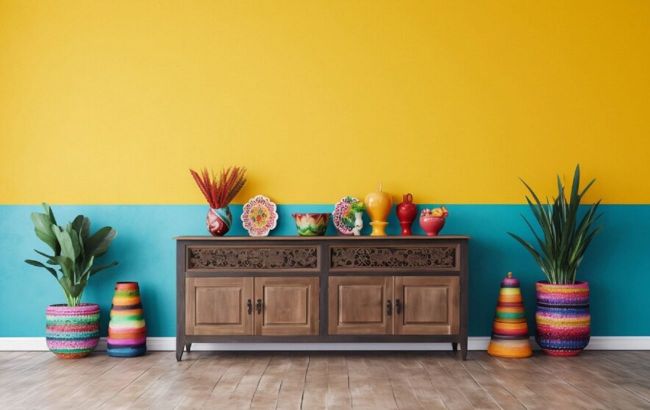What colors can visually raise ceiling and expand walls of your apartment
 What colors to choose for rooms with low ceilings and narrow dimensions (photo: Freepik)
What colors to choose for rooms with low ceilings and narrow dimensions (photo: Freepik)
Color in interior design is not just a decorative element, but a real tool for the visual transformation of space. Designers are actively using these techniques to turn awkward layouts into harmonious interiors.
Choosing a color for narrow rooms
When it comes to narrow rooms, it is important to choose the right palette that will help to visually expand the space. Light shades, such as white, light gray, mint, or pale blue, are ideal for reflecting light and creating a spacious effect.
They are suitable for narrow corridors, small bathrooms, or studio apartments. If you want to add warmth, you can use soft beige, cream, or sandy shades, which create coziness but slightly reduce the space.
Dark colors, such as deep blue, emerald, or even black, are traditionally considered unsuitable for narrow rooms. However, they can be used on one accent wall to create depth.
This will help to "shorten" a room that is too elongated and make it more balanced. The main thing is to avoid painting all the walls in dark colors so as not to create the feeling of a closed space.
How to combine several colors in one room
It is not necessary to paint the room in one color. Spectacular interiors are often created with a combination of two or three shades. One of the popular techniques is the 70-20-10 rule.
It involves the use of 70% of the main neutral color, 20% of the secondary tone, and 10% of the contrasting accent. For example, a white ceiling and walls in light gray with bright accents in the form of turquoise pillows or paintings.
To visually enlarge the space, you can combine light and dark shades on different walls. For example, the wall opposite the window is painted in a darker shade that "pushes" the space back, and the side walls are left light to create the effect of width. If the room is well-lit, even saturated colors will not seem too heavy.
The right color can visually transform a room (photo: Freepik)
How color affects ceiling height
Ceiling height also significantly changes the perception of space. If the ceiling is too low, use light colors - white, beige, or light blue. They create the illusion of space and "lift" the ceiling. To enhance the effect, you can add a white stripe about 10 cm high on the top of the walls, which smoothly transitions into the color of the ceiling.
If the ceiling is too high and creates a feeling of coldness and emptiness, you can "lower" it with darker shades. For example, painting the ceiling a light gray or even graphite color will make the space more cozy.
Another trick is horizontal stripes on the walls, which visually reduce the height and make the room more harmonious.
Paint textures and properties
It is equally important to consider the texture of the paint and its ability to reflect light. Matte paint absorbs light and hides the unevenness of the walls, making them perfectly smooth. It is well suited for walls in rooms where a soft and cozy atmosphere is important.
On the other hand, glossy and semi-glossy paints reflect light, creating an effect of shine and space. They are great for accent walls or for dark colors to avoid overloading the interior.
In addition, it is important to consider textiles and accessories. For example, neutral-colored curtains can visually "expand" the windows, and mirrors on the walls add depth to the space. The combination of colors and textures will help to create a harmonious interior, even in a small room.
Sources: Apartment Therapy, Homes and Gardens, DIY Joy websites.

